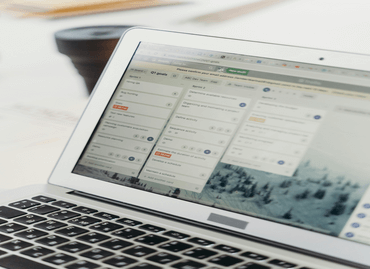- By Admin
- 2 Comments
-
 TaskManagement
TaskManagement
Kanban Project Management
Kanban project management is an Agile framework used to visualize and improve workflows, reduce waste and inefficiency, and increase team focus by limiting work in progress. First developed by Toyota engineer Taiichi Ohno in the 1940s, Kanban comes from the Japanese word for “sign” or “visual board.”
While Kanban has its origins in lean manufacturing, the framework has been widely adopted by IT, service delivery, project management, and operations teams across industries. Unlike Scrum, Kanban is not based around sprints, ceremonies, and roles. Instead, Kanban is flexible and adapts to existing roles and team structures by categorizing tasks on a Kanban board according to what production phase they are in (To-Do, In Progress, and Complete).
Kanban is about more than using cards to help manage just-in-time delivery. The Kanban framework is designed to help teams reduce bottlenecks, improve efficiencies, increase quality, and boost output. There are believed to be four foundational principles of Kanban.
Start with now. Focus on what you’re doing now. Fully understand the processes already in place, including what works and what doesn’t. Take an incremental approach. Look at how to slowly change your processes over time. Avoid implementing radical changes. Keep roles. Unlike other frameworks that promote their own unique roles (such as Scrum master), Kanban emphasizes working with the roles your team already has. Encourage leadership. Innovation and ideas for improvement should be promoted at all levels. Encourage every employee to act as a leader, regardless of role or title.
Visualize the workflow. Kanban requires using a physical or virtual board to visualize how work flows from one stage to the next. Limit work in progress. Each project team needs to set a limit to how many tasks are allowed to be in each stage of the workflow at once. If you have five reviewers, you may limit the “Review” stage to having no more than five tasks in it at once. Actively manage the workflow. As a project manager, your primary role is to monitor the workflow for bottlenecks and make adjustments to remove roadblocks and improve efficiency. Create process guidelines. Have clearly communicated process policies on how each work item is completed, what “done” means, etc. This can be a checklist in each column or on each “card” outlining what is required for it to move to each stage. Use feedback loops. Use tools and processes to promote early and continual feedback. This can mean multiple review stages, or reports and metrics communicating performance. Evolve. As with other Agile frameworks, adapting, evolving, and improving your processes is encouraged. Focus on developing and implementing small changes to improve your workflow and processes.


The most basic Kanban board only has three workflows: To Do Work In Progress (WIP) Complete However, columns can also be added or changed to suit your project depending on the Kanban board software you use.






02 Comments
Albert Flores
March 20, 2024 at 2:37 pmThe Kanban board feature is incredibly intuitive! It helps our team visualize workflows and manage tasks efficiently, making project tracking a breeze.
Henna Stunneg
March 20, 2024 at 2:37 pmI love how the Kanban board organizes our tasks so clearly. It’s easy to move items between stages, and the drag-and-drop functionality saves us so much time!